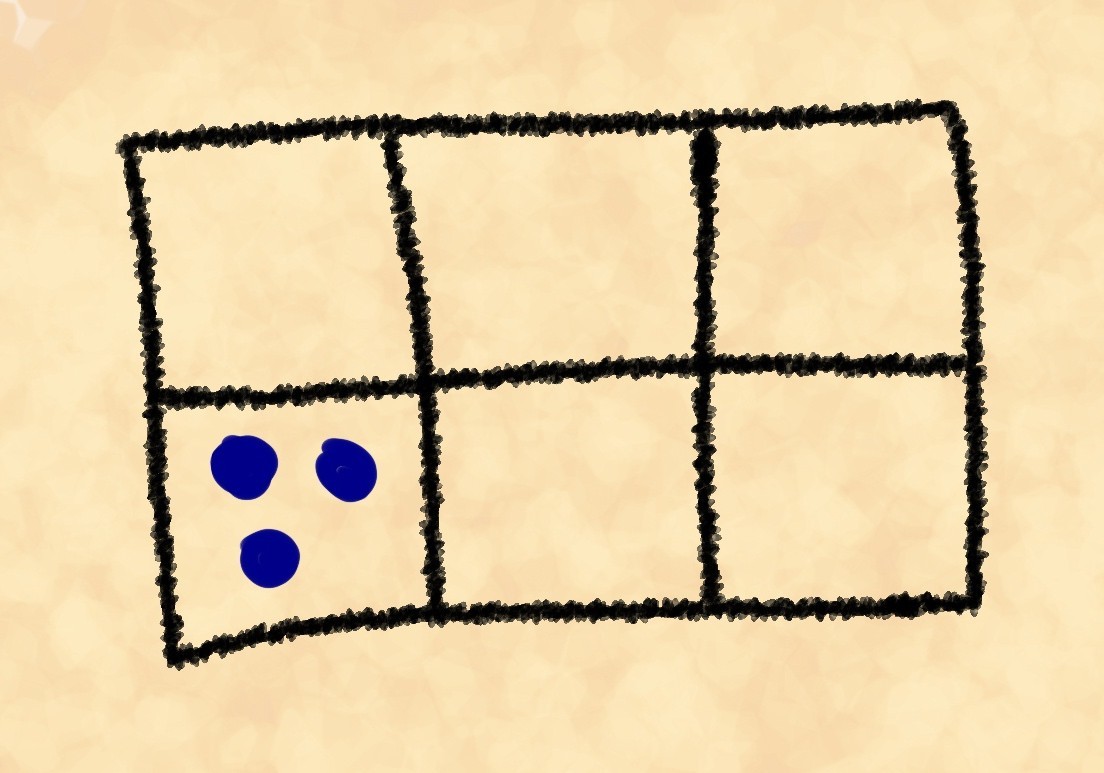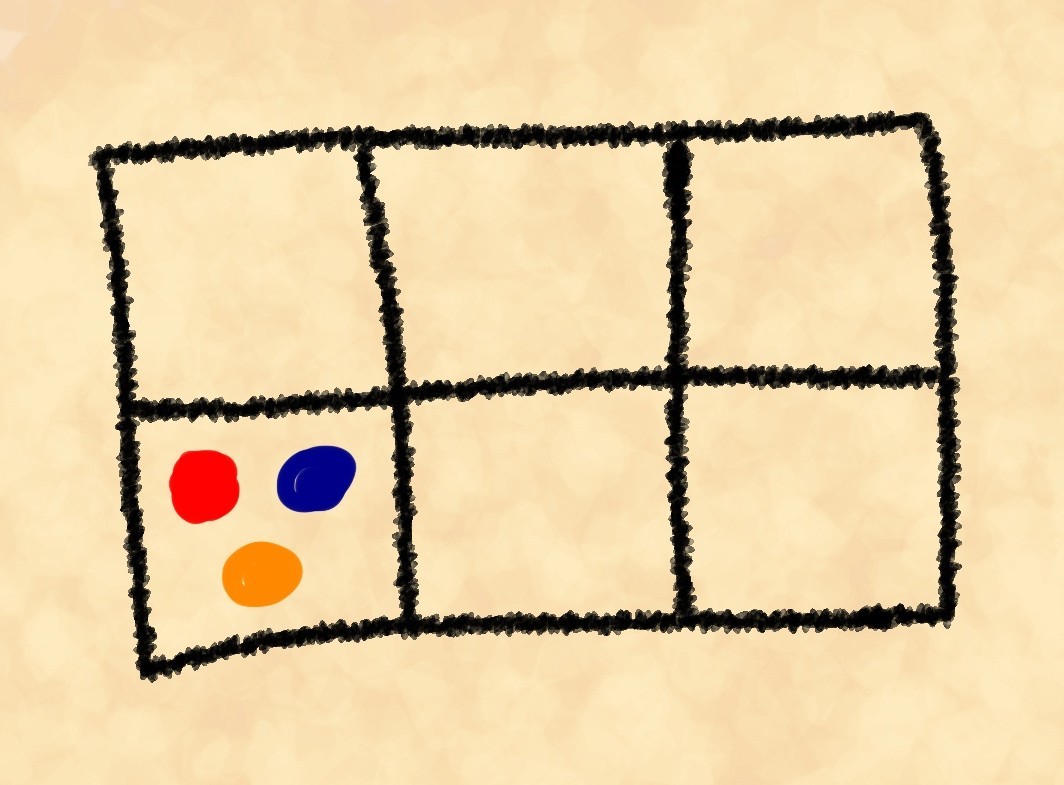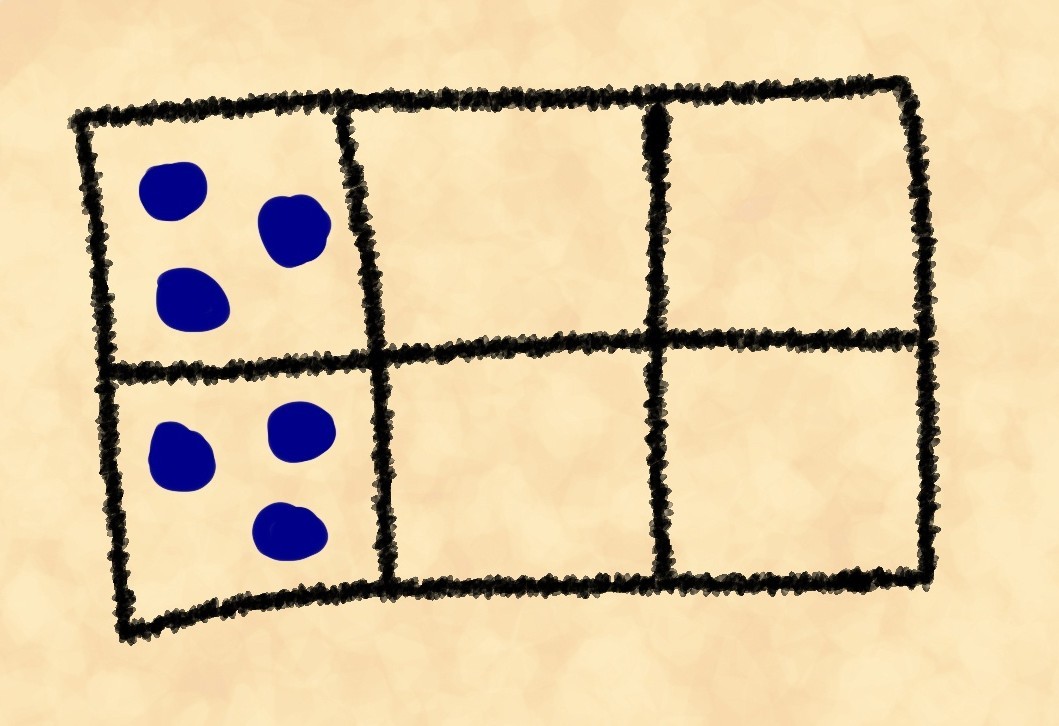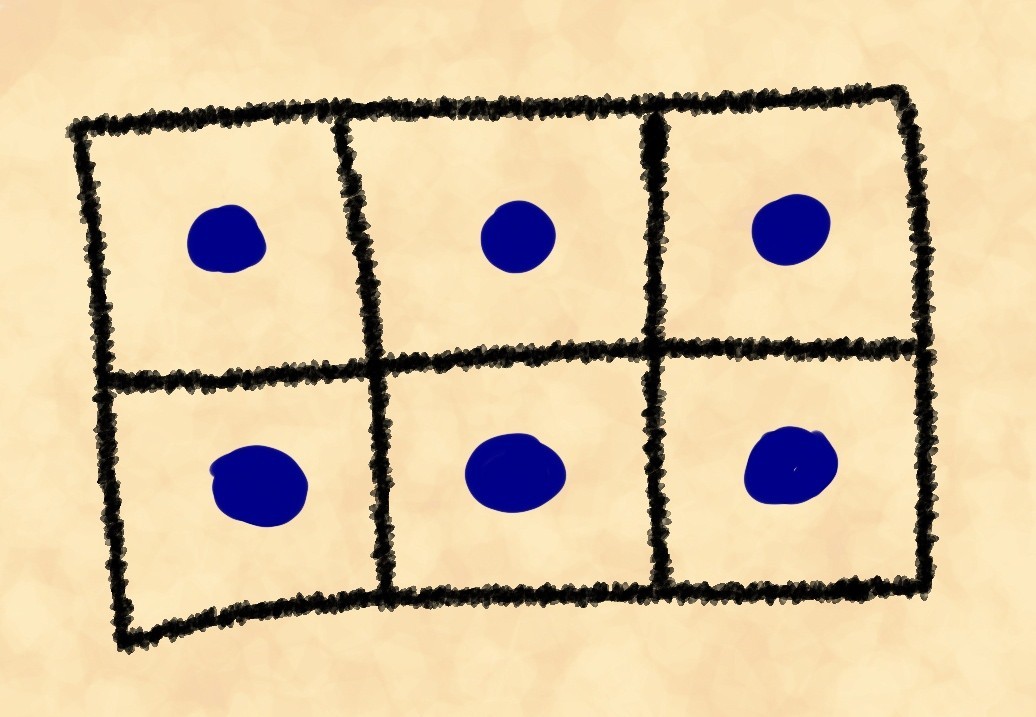Important tautology in science. Part 1. Physics
Do you know what logical tautology is? Probably you know. And in case you do not know this, the author will now try to explain this concept. We will not switch to the dry and formal language of mathematics, we will not be soulless pedants, like Wikipedia, and let's say figuratively: tautology is a kind of Ouroboros biting its own tail. For example, “nothing is when there is nothing”, or “objects that are narrow enough and low enough to pass through this doorway will easily pass through it” and the like. Such statements are always true, and they, roughly speaking, do not carry any new information. Surprisingly, but a number of important laws and principles of science contain hidden tautologies, which, however, does not detract from their importance and correctness. Interesting? Then forward, under the cat!
Emperor Sarlak Grant Scienticus III was bored. Very boring. Usually, when he felt bored, he played stones (a fairly simple but tricky game, similar to our checkers, reversi, and Go ). Today, however, none of the philosophers who usually played with him came. He sat looking dazed and looking at one of the positions.

The internal experimenter Grant decided to count the number of possible positions. Let's leave it at this place, and we will do our own counting.
According to the rules it is allowed to have up to 3 stones in one cell. Total stones 6 (3 for each player). We will not count the number of all possible positions. Where it is more interesting to count how many ways you can lay out the position. But, for starters, look at the picture.
')

For simplicity, we still consider only one cell. The above position can be obtained, for example, in the following three ways, differing in exactly which stones we laid on the board:



We conditionally painted the stones so that you can distinguish them from each other. Obviously, there are many more ways than three. But how much? We can choose the first of the three stones in six ways. Each of these six options continues with the selection of a second stone from the remaining five, and the last of the remaining four. We have However, at the same time, we allowed repetitions, for example, red-blue-yellow, yellow-red-blue and blue-red-yellow are the same “display”.
To find the number of repetitions, we will find in how many ways we can lay out three stones of the same color on the board. The first can be any of the three necessary stones, the second should be one of the remaining two, the third will necessarily be the last stone we need: .
As a result, we have 120/6 = 20 ways to lay out the stones as required. Let's call this number the weight of this position. Of course, it has nothing to do with physical weight, it’s just that the name is generally accepted in statistics.
Let's complicate the task. Let's calculate the weights of these positions:



If you are too lazy to understand all this math, skip the next paragraph.
First position:
For the second and third, we have respectively and . Division in all cases is performed in order to get rid of repetitions.
So, we have the following weights: 90 for the first layout, 180 for the second and 360 for the third. Have you noticed that the more ordered the position, the less its weight? His Majesty Grant noticed this. And now he is going to calculate the weight for real game positions.



He succeeds, respectively, 90, 360 and 720. However, here his patience ends (as, probably, yours). He pushes the board in frustration, randomly sweeping the stones and noticing the philosopher Klofjus standing at the door.
“Tell me, philosopher,” he asks with a hint of discontent, “why, when I push the board, do the stones fly along it randomly, evenly, and not fit on the edge of three in a cage?”
Klofzius smiled in response and said:
“I have been watching your calculations for some time, my lord, and you probably could have already answered this question yourself.” But I’ll still say that stones can be arranged from the edge of the board in ninety different ways, and seven hundred and twenty can be dispersed into all the cells. For stones, there are many more ways to be evenly scattered on the board than collected from the edge.
Perhaps here we will leave Sarlak. But pay attention to Klofzus's explanation: the stones are scattered on the board because there are many more ways for them to be scattered evenly than to be laid out in a completely orderly manner. And the difference between the number of ways (weights of stone layouts) is greater, the larger the board and the number of stones. For a board of 15 cells (3 by 5) and 15 stones, the weight of a fully ordered layout (3 stones in a cell along one edge) is approximately 1.4 million (1401400 if accurate) and for a uniform (one in each cell) - approximately 1.3 quadrillion that is, almost a million times more. Consequently, in this case it is much easier to get a mess than to get order. Such a wonderful statement is involuntarily recalled: “Eggs break at every step, but no one has ever seen the lumps of a broken egg come together and become a whole egg. And all because there is only one way to get a whole egg and infinitely many ways to get a broken one. ”
Summarize the observed pattern:
In any process that occurs on its own, without additional influence from the outside, the result that can be achieved in the greatest number of ways is most likely realized.
Look, this is a tautology in all its glory. If you simplify everything, then I just say that "what is easier to happen happens more often." However, it is also one of the most important physical laws. Many of you have probably realized that this is the second law of thermodynamics. Let's look at one of his “official” formulations:
The entropy of a closed system cannot decrease.
Now it's less like a tautology, huh? But what is this buzzword entropy?
Let's imagine the air filling the room. It consists of a huge number of molecules. If we mentally divide the room into cells, we will get a three-dimensional analogue of a game of stones on a very large board with a huge amount of stones. Each position of the game in this case is called the macrostate of the system. Each of the layouts of stones that implement one or another position is a microstate . Let's take two numbers: the number of all microstates that implement this macrostate and the number of all possible microstates. If we divide the first by the second, we get the probability of the realization of this macrostate.
The definition from the book: the entropy of the state of the system is called the logarithm of the probability of realization of this state.
Let us translate into a language understandable to Grant, the entropy of a position is the logarithm of the weight of this position. Let's try to make it even clearer: the more ways you can get a position, the more entropy.
Now we see that the book formulation of the second beginning says the following: from a position in itself can only occur a transition to such a position, which can be obtained by more or the same number of paths as the initial one.
Let us try to simplify: if we shake the board, we will rather get a position that is easier to get.
It seems, we again came to the tautology. However, even if it is a tautology, the second law is one of the most important physical laws. Moreover, it is the only law of physics that tells us that time must flow in a certain direction, which makes the distinction between the past and the future.
Finally, let's look at a couple of formulations of the second beginning:
As you can see, there is no longer a tautology. And none of them is obvious. However, it can be shown that both of these formulations are completely equivalent to the tautological “most likely that something is more likely to happen.” Sometimes, in order to learn something new, we need to first understand something obvious.
In the next part, we will look at another “scientific tautology,” which, at first glance, violates the second law of thermodynamics.
Emperor Sarlak Grant Scienticus III was bored. Very boring. Usually, when he felt bored, he played stones (a fairly simple but tricky game, similar to our checkers, reversi, and Go ). Today, however, none of the philosophers who usually played with him came. He sat looking dazed and looking at one of the positions.
The internal experimenter Grant decided to count the number of possible positions. Let's leave it at this place, and we will do our own counting.
According to the rules it is allowed to have up to 3 stones in one cell. Total stones 6 (3 for each player). We will not count the number of all possible positions. Where it is more interesting to count how many ways you can lay out the position. But, for starters, look at the picture.
')
For simplicity, we still consider only one cell. The above position can be obtained, for example, in the following three ways, differing in exactly which stones we laid on the board:
We conditionally painted the stones so that you can distinguish them from each other. Obviously, there are many more ways than three. But how much? We can choose the first of the three stones in six ways. Each of these six options continues with the selection of a second stone from the remaining five, and the last of the remaining four. We have However, at the same time, we allowed repetitions, for example, red-blue-yellow, yellow-red-blue and blue-red-yellow are the same “display”.
To find the number of repetitions, we will find in how many ways we can lay out three stones of the same color on the board. The first can be any of the three necessary stones, the second should be one of the remaining two, the third will necessarily be the last stone we need: .
As a result, we have 120/6 = 20 ways to lay out the stones as required. Let's call this number the weight of this position. Of course, it has nothing to do with physical weight, it’s just that the name is generally accepted in statistics.
Let's complicate the task. Let's calculate the weights of these positions:
If you are too lazy to understand all this math, skip the next paragraph.
First position:
- We put 2 stones on one of the two left cells:
- On the second cell lay out two of the remaining 4 stones:
- Total we have ways.
For the second and third, we have respectively and . Division in all cases is performed in order to get rid of repetitions.
So, we have the following weights: 90 for the first layout, 180 for the second and 360 for the third. Have you noticed that the more ordered the position, the less its weight? His Majesty Grant noticed this. And now he is going to calculate the weight for real game positions.
He succeeds, respectively, 90, 360 and 720. However, here his patience ends (as, probably, yours). He pushes the board in frustration, randomly sweeping the stones and noticing the philosopher Klofjus standing at the door.
“Tell me, philosopher,” he asks with a hint of discontent, “why, when I push the board, do the stones fly along it randomly, evenly, and not fit on the edge of three in a cage?”
Klofzius smiled in response and said:
“I have been watching your calculations for some time, my lord, and you probably could have already answered this question yourself.” But I’ll still say that stones can be arranged from the edge of the board in ninety different ways, and seven hundred and twenty can be dispersed into all the cells. For stones, there are many more ways to be evenly scattered on the board than collected from the edge.
Perhaps here we will leave Sarlak. But pay attention to Klofzus's explanation: the stones are scattered on the board because there are many more ways for them to be scattered evenly than to be laid out in a completely orderly manner. And the difference between the number of ways (weights of stone layouts) is greater, the larger the board and the number of stones. For a board of 15 cells (3 by 5) and 15 stones, the weight of a fully ordered layout (3 stones in a cell along one edge) is approximately 1.4 million (1401400 if accurate) and for a uniform (one in each cell) - approximately 1.3 quadrillion that is, almost a million times more. Consequently, in this case it is much easier to get a mess than to get order. Such a wonderful statement is involuntarily recalled: “Eggs break at every step, but no one has ever seen the lumps of a broken egg come together and become a whole egg. And all because there is only one way to get a whole egg and infinitely many ways to get a broken one. ”
Summarize the observed pattern:
In any process that occurs on its own, without additional influence from the outside, the result that can be achieved in the greatest number of ways is most likely realized.
Look, this is a tautology in all its glory. If you simplify everything, then I just say that "what is easier to happen happens more often." However, it is also one of the most important physical laws. Many of you have probably realized that this is the second law of thermodynamics. Let's look at one of his “official” formulations:
The entropy of a closed system cannot decrease.
Now it's less like a tautology, huh? But what is this buzzword entropy?
Let's imagine the air filling the room. It consists of a huge number of molecules. If we mentally divide the room into cells, we will get a three-dimensional analogue of a game of stones on a very large board with a huge amount of stones. Each position of the game in this case is called the macrostate of the system. Each of the layouts of stones that implement one or another position is a microstate . Let's take two numbers: the number of all microstates that implement this macrostate and the number of all possible microstates. If we divide the first by the second, we get the probability of the realization of this macrostate.
The definition from the book: the entropy of the state of the system is called the logarithm of the probability of realization of this state.
Let us translate into a language understandable to Grant, the entropy of a position is the logarithm of the weight of this position. Let's try to make it even clearer: the more ways you can get a position, the more entropy.
Now we see that the book formulation of the second beginning says the following: from a position in itself can only occur a transition to such a position, which can be obtained by more or the same number of paths as the initial one.
Let us try to simplify: if we shake the board, we will rather get a position that is easier to get.
It seems, we again came to the tautology. However, even if it is a tautology, the second law is one of the most important physical laws. Moreover, it is the only law of physics that tells us that time must flow in a certain direction, which makes the distinction between the past and the future.
Finally, let's look at a couple of formulations of the second beginning:
- Clausius postulate: A circular process is impossible, the only result of which is the transfer of heat from a less heated body to a more heated one
- Thomson's postulate: A circular process is impossible, the only result of which would be the production of work by cooling the heat reservoir.
As you can see, there is no longer a tautology. And none of them is obvious. However, it can be shown that both of these formulations are completely equivalent to the tautological “most likely that something is more likely to happen.” Sometimes, in order to learn something new, we need to first understand something obvious.
In the next part, we will look at another “scientific tautology,” which, at first glance, violates the second law of thermodynamics.
Source: https://habr.com/ru/post/400803/
All Articles